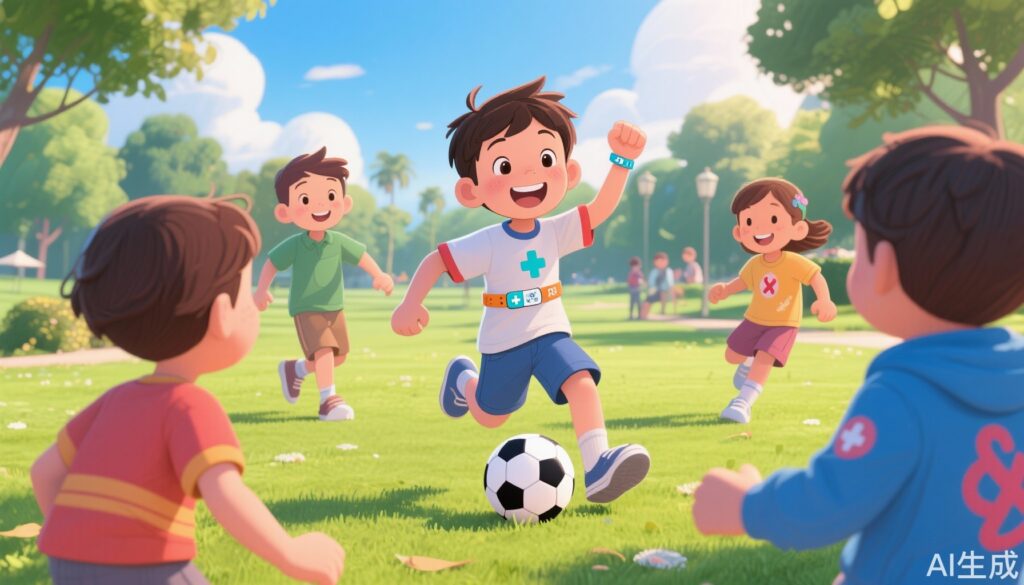Introduction
Chronic physical illnesses in children represent a significant and often underestimated public health challenge, affecting not only the physical well-being but also the psychological development of young individuals. Globally, a sizable percentage of children—up to 18% under 25 years of age in some populations—live with chronic physical diseases such as asthma, eczema, epilepsy, congenital heart disease, and sensory impairments. These conditions impose limitations on everyday functioning, increase healthcare costs, and crucially, delay achievements in psychosocial developmental milestones. A pressing concern for clinicians, educators, and caregivers alike is the markedly increased risk of mental health problems in these children compared to their healthy peers. Yet, the pathways linking chronic physical illness to later psychological difficulties have remained insufficiently understood.
Scientific and Clinical Evidence
Recent large-scale research from the Netherlands provides enlightening insights into these complex interactions. Drawing on data from the Generation R Study—a prospective population-based cohort involving 4,043 children—the investigation highlighted that approximately 17.1% of participants were diagnosed with chronic physical diseases, many confirmed before age six. The study meticulously tracked children’s physical health, their engagement in various forms of play and social activity at ages six and ten, and subsequently assessed mental health outcomes at age fourteen using the well-validated Child Behavior Checklist (CBCL).

One of the study’s central findings is a direct positive association between chronic physical disease status and increased psychological symptom scores in early adolescence (β=0.27), indicating a significantly higher risk of emotional and behavioral problems. More importantly, the study identified that restrictions in physical activity and social play at around six years old mediate a meaningful portion of this risk—specifically, social activity limitations accounted for 8.33% and physical activity limitations for 7.72% of the increased mental health burden.

This mediation suggests that the pathways from chronic illness to mental health issues are not solely biological or disease-driven but are also shaped by the child’s reduced engagement in crucial developmental activities such as play. In addition, frequent participation in sports (over 4 hours weekly) and very frequent out-of-school social interactions at age ten are linked with fewer psychological problems at age fourteen, underscoring the protective effect of active social and physical engagement.
The Hidden Role of Play in Child Development
Play is a cornerstone of childhood, fundamental not only for enjoyment but as a vital component of neurocognitive, behavioral, and emotional maturation. It fosters resilience, social skills, cognitive flexibility, and prepares children for the complexities of adult life. Unfortunately, children with chronic illnesses often face barriers to unrestricted play, stemming from the direct effects of disease symptoms, medical treatments, psychological stress, and altered family dynamics.
The Generation R findings affirm prior theories but add quantitative depth: the early childhood period is a critical window for intervention. Limitations in outdoor activities, sports, and social play at age six set the stage for later psychological challenges. This highlights an opportunity for targeted interventions aimed at mitigating activity restrictions to improve mental health outcomes.
Misconceptions and Challenges
A common misconception is that children with chronic physical illnesses should avoid vigorous play and social activities to prevent exacerbations. While caution is warranted in some conditions, excessive restriction can be harmful. Another erroneous belief is that mental health issues in these children arise purely as a reaction to their physical condition without modifiable behavioral mediators.
In reality, overly protective parenting and systemic barriers (e.g., school accommodations, accessibility) often exacerbate activity limitations, inadvertently increasing mental health risks. Recognizing and correcting these misconceptions is key to fostering healthier psychosocial development.
Practical Implications and Recommendations
Clinicians, educators, and families should strive to maximize safe participation in physical and social play from an early age. Practical steps include:
1. Early assessment of activity restrictions in children diagnosed with chronic illnesses, incorporating parent reports and clinical evaluations.
2. Developing individualized activity plans that balance health safety with opportunities for outdoor play, sports, and socializing.
3. Encouraging schools and communities to adopt inclusive policies and environments that accommodate children’s physical needs while promoting active engagement.
4. Offering psychological support and guidance to families to overcome fears and barriers around activity participation.
5. Monitoring mental health regularly, especially during transition periods such as early childhood and adolescence.
Expert Insights
According to pediatric psychologist Dr. Emily Carter, “This research underscores a paradigm shift from focusing solely on medical treatment to addressing lifestyle and social factors that shape mental health trajectories. Early childhood is a golden period to intervene—ensuring children aren’t sidelined from play can protect against later emotional difficulties.”
Dr. Michael Van Dijk, lead author of the Generation R study, adds, “Chronic physical conditions need to be managed holistically. Our data show that improving opportunities for physical and social activity could reduce the psychological burden that these children often carry.”
Patient Scenario
Consider 9-year-old Lucas, diagnosed with moderate asthma at age 3. His parents, concerned about asthma attacks, limited his outdoor play and sports participation. Consequently, Lucas became more withdrawn, attending fewer social events and spending more time on screens. By age 14, he exhibited symptoms of anxiety and depression.
Following new guidance emphasizing safe physical activity, Lucas’s family worked with his healthcare team to craft a personalized exercise plan and enrolled him in a community soccer team adapted for children with asthma. Over time Lucas increased his social interactions and physical stamina, leading to marked improvements in his mood and school performance.
This vignette illustrates how addressing early activity restrictions can alter the mental health trajectory for children like Lucas.
Conclusion
The evidence from the Generation R cohort highlights the intertwined relationship between chronic physical illness, play behavior, and mental health during the critical developmental periods of childhood and adolescence. Activity restrictions in early childhood act as important mediators, contributing to increased psychological difficulties later on. Conversely, sustained engagement in physical and social activities during later childhood offers protective benefits.
Proactive clinical and community strategies to promote safe play and social participation for children with chronic diseases are imperative. These approaches can facilitate better mental health outcomes, enhance quality of life, and foster resilience.
Future research should explore disease-specific and play-type nuances to tailor interventions further. Meanwhile, the message is clear: unlocking the mental health potential of children with chronic illness requires enabling their movement and social connections as much as managing their medical conditions.
References
1. Koevoets EW, Nijhof SL, Stutvoet MD, et al. Longitudinal associations between chronic physical conditions, play behavior, and mental health problems in children. World J Pediatr. Published online July 31, 2025. doi:10.1007/s12519-025-00945-z IF: 4.5 Q1 2. Ginsburg KR. The importance of play in promoting healthy child development and maintaining strong parent-child bonds. Pediatrics. 2007;119(1):182-191. doi:10.1542/peds.2006-2697 IF: 6.4 Q1 3. World Health Organization. WHO guidelines on physical activity and sedentary behavior. 2020.
4. American Academy of Pediatrics. Policy Statement: The Role of Play in Promoting Healthy Child Development and Maintaining Strong Parent-Child Bonds. Pediatrics. 2018;142(3):e20182058.



